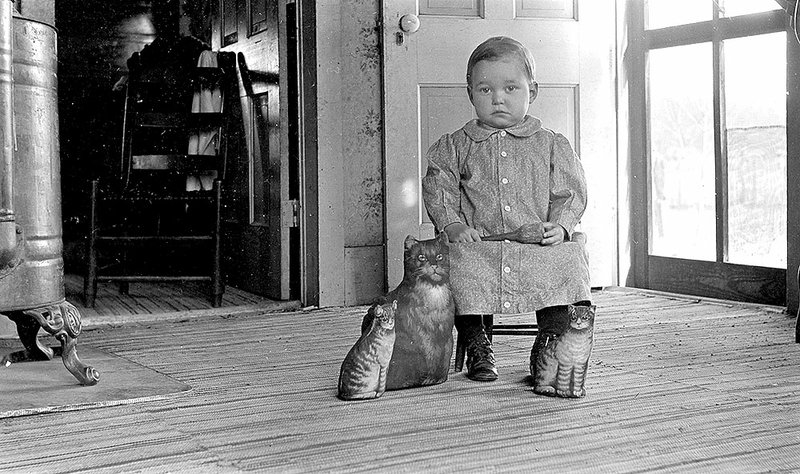Back in the days when Marion Mason was writing for The Springdale News, there were two ways to find out who was visiting whom, who had gone out of town, who was celebrating a birthday, who had a new beau or a new grandbaby.
One was gossip.
FAQ
Sandwiched In:
‘Kodaking with Mulkeepmo’
WHEN — Noon Wednesday
WHERE — Shiloh Museum of Ozark History in Springdale
COST — Free
INFO — 750-8165
But even more efficient were columns by "correspondents" like Mason, who lived in the Johnson community.
"Even though it's focused on Johnson, one thing I'd love for people to know is that the things he wrote about were common to all the small, rural communities in Northwest Arkansas," says Marie Demeroukas, photo archivist for the Shiloh Museum of Ozark History and the speaker at Wednesday's Sandwiched In program on Mason.
His columns, which ran under the pen name "Mulkeepmo" from 1893 to 1933, also sometimes reflected on national trends. In one, Demeroukas says, Mason wrote about how "Kodaking was a great fad, an inexpensive hobby to share with other folks." Kodak, she explains, "was trying to get people to use the brand name as a verb, just like Google."
And occasionally, Mason coined his own terms. Once, writing about folks who just couldn't seem to make it to church on Sunday, he wrote of "Morbus Sabbaticus," also known as "Sunday sickness."
At the same time he was reporting on news of the day for one of the predecessors of this newspaper, Mason was "a very good amateur photographer," Demeroukas says, capturing such things as Frisco train wrecks, strawberry harvests, neighborhood kids, Sunday outings and the goings-on at the lime kilns. The Shiloh Museum came into possession of some 1,500 of his images, most of them gifts from a great-nephew and his great-niece, Maudine Sanders, who was also a columnist for The Springdale News.
"But every year we get more from different places," Demeroukas says. "Most of the images appear to date from around 1908 to the teens, with the majority around 1910."
Among the images are postcards created from Mason's photos plus negatives that go clear back to glass plates. "We've been able to print off some that are over 100 years old," Demeroukas says.
Because the museum has both the columns and the images, Demeroukas has been able to pair them together for her Sandwiched In program. And she's learned a few things about Mason along the way.
"Mason covered it all, and through his camera lens and fountain pen, we're able to catch a glimpse of small-town life in the early 1900s," she says. "I think he just loved being a writer. He loved sharing the news."
Journalism was not Mason's livelihood, however.
"I don't know a terrible lot about him," Demeroukas says. "I know he was the miller at the Johnson mill for about 15 years, worked as a grain broker, taught at Stony Point School, and he also worked as a bookkeeper in a canning factory in town. Sometime in the late 1920s, he had a stroke, which really affected one side of his body and his speech. His sister [with whom he lived] ended up caring for him, but he was still writing the column until 1933, when his health just made it impossible."
Although he died in 1946, Mason's legacy has lived on in his words and photos -- something technology actually makes less likely for current journalists. Some experts say this era may be remembered as "a digital dark age."
"Think about all the things we're sending through email and not saving, posting on social media but not saving, all the pictures in our phones we're not saving," Demeroukas says. "There's going to be a lot of material that goes missing."
NAN What's Up on 08/14/2015

